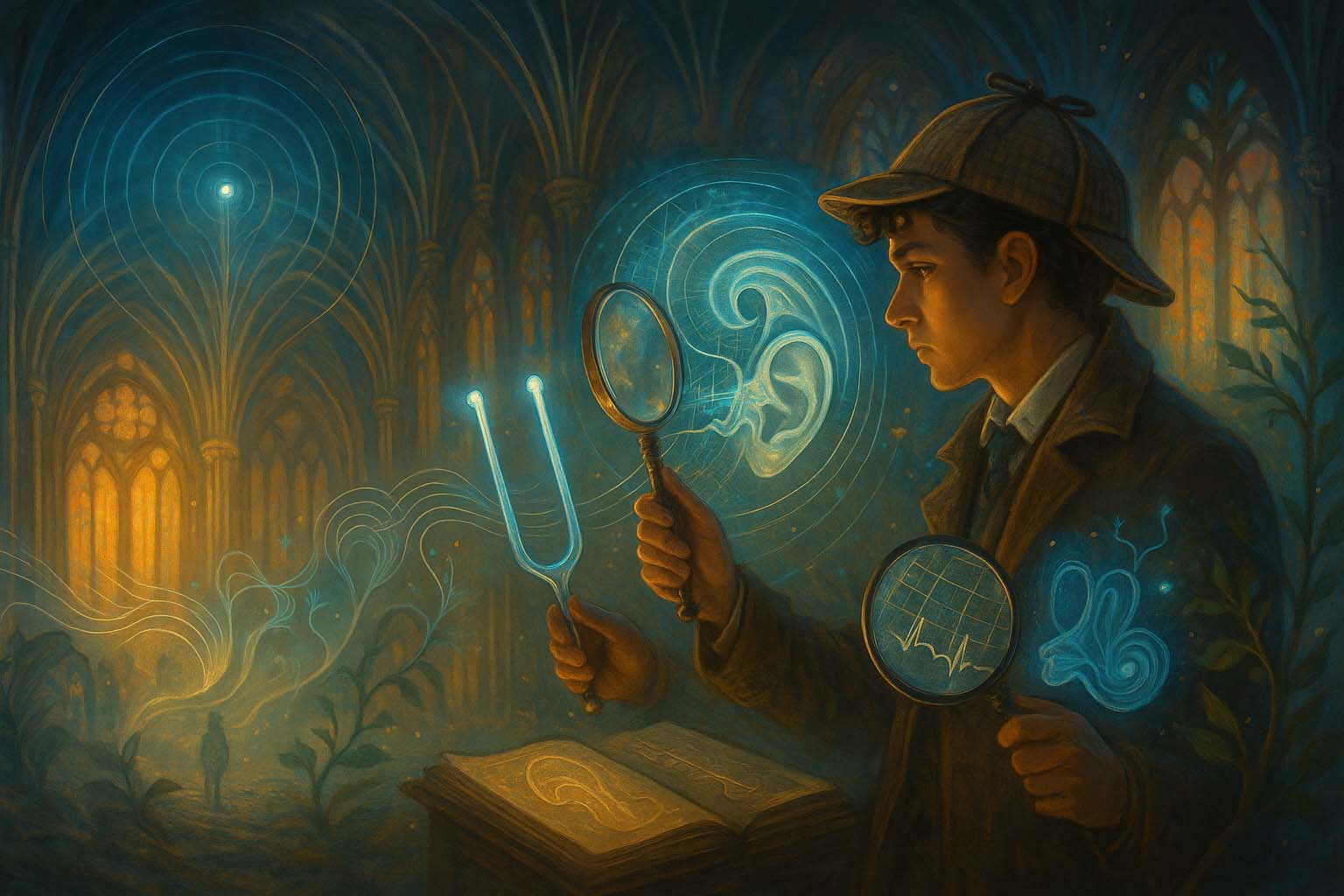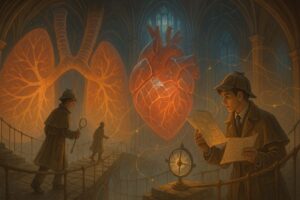
Otolaryngology (ENT)
- Posted by admin
- Categories Core Surgical Specialties
- Date May 24, 2025
- Comments 0 comment
The Head-and-Neck Detective’s Domain – Cracking the Cases of Hearing, Breathing, and the Voice Within
1. Introduction: The Scene of the Specialty
Step into the shoes of an ENT sleuth.
This is the sensory frontier of surgery—where sight, sound, smell, speech, and swallow converge. ENT surgeons investigate the corridors of the head and neck: narrow passageways, delicate structures, and high-stakes communication hubs. From snoring to sinus masses, hoarseness to hearing loss, they treat conditions both intricate and intimate. Welcome to a world where a sore throat could be a tumour, and where the way someone speaks may be the first clue to something much deeper.
2. Key Mysteries They Solve (Common Conditions)
These detectives specialise in solving cases involving:
- Hearing Loss & Otitis Media – from blocked ears to ossicle disruption.
- Tonsillitis, Sleep Apnoea, and Snoring – airway puzzles in paediatrics and adults.
- Sinusitis & Nasal Obstruction – chronic congestion and craniofacial mysteries.
- Head and Neck Tumours – cancers of the larynx, thyroid, oral cavity, and beyond.
Each case balances function with finesse—because even a millimetre shift can change how we breathe, speak, or hear.
3. Their Trusted Tools & Techniques
Every detective has their kit—and in ENT, tools may include:
- Otoscopy, Nasendoscopy, and Laryngoscopy – visualising deep with light and lens.
- Audiometry & Balance Testing – assessing inner ear and neural pathways.
- Microsurgery & Endoscopic Approaches – precision work in tight anatomical zones.
- Head and Neck Surgery – from thyroidectomy to complex neck dissections.
This is surgery in three dimensions—narrow tunnels, delicate nerves, and essential senses.
4. The Charms of This Field: Why It Captivates the Curious
- Sensory Impact: Touch hearing, speech, smell, taste, and breathing in a single specialty.
- Anatomical Mastery: The head and neck offer rich, complex surgical geography.
- Paediatric to Geriatric Range: From grommets in toddlers to laryngectomy in elders.
- Procedural Variety: Clinic-based procedures, high-tech surgery, and aesthetic reconstructions.
This is where sound and structure meet function and feeling.
5. Challenges: The Toughest Cases They Face
- Tiny Working Spaces – Millimetres make or break surgical outcomes.
- Cranial Nerve Risk – Facial, vagus, accessory, and hypoglossal nerves run through your field.
- Cancers in Critical Zones – Speech, swallow, and appearance must all be preserved where possible.
- Symptom Ambiguity – Ear pain may be dental; hoarseness may be neurological.
But the experienced ENT surgeon knows: precision and patience reveal what lies behind the symptoms.
6. Famous Cases and Hallmark Clues
- The “Classic Presentation” – Painless neck mass in an older smoker: possible oropharyngeal cancer.
- The “Zebra” – Recurrent unilateral nosebleeds in a teenager: suspect juvenile nasopharyngeal angiofibroma.
- The “Aha Moment” – Hoarseness revealing vocal cord paralysis from a lung apex tumour (recurrent laryngeal nerve involvement).
7. Your Training Trail: How to Join the Investigation
To become an ENT detective:
- Begin with strong anatomical foundations—head and neck structures demand spatial mastery.
- Train in otology, rhinology, laryngology, paediatrics, and head and neck oncology.
- Develop delicate surgical technique—your field involves finesse, not force.
- Learn to blend surgical skill with empathy—many patients’ concerns centre around identity, confidence, and connection.
Whether restoring a child’s hearing, excising a thyroid mass, or rebuilding a cancer-altered face, you’ll help people reclaim their voice—literally and figuratively.
8. Final Words: The Signature of the ENT Detective
ENT detectives safeguard the senses and restore the structures we use to speak, listen, breathe, and belong.
They operate in the smallest spaces with the greatest stakes—ensuring that people are heard, understood, and healed.
They are craftsmen of clarity and comfort in a field where millimetres change everything.
So if you’re drawn to the harmony of form and function—
then this is your domain to explore, with ear, nose, and throat as your guide.



